ADI OZ-ARI | DISPERSAL
PHYSICAL, EMOTIONAL AND METAPHORICAL
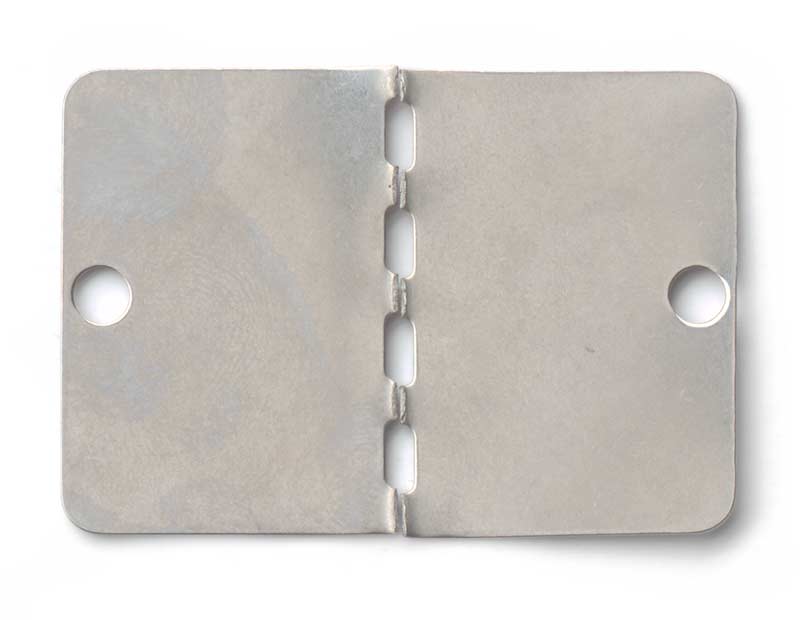
“I engage in the body, which I view as a machine, attracted to moments of breakdown.
Illness and pain are the raw materials comprising my personal alchemy. A feeling of discovery ensues when the two coalesce into an image. Inert and organic materials originating in my own and foreign bodies are the elements with which I work. Similar to a chemical reaction, they undergo a transformation to come together into a lyrical image that sometimes loses its source entirely, a process of abstraction.
Like producing a sound reflected back as an echo, my work turns to parallel worlds that respond in poetry, painting, and body art. These are the realms which I visit from time to time and from which I always return to photography, as I am deeply rooted in its tradition and history.
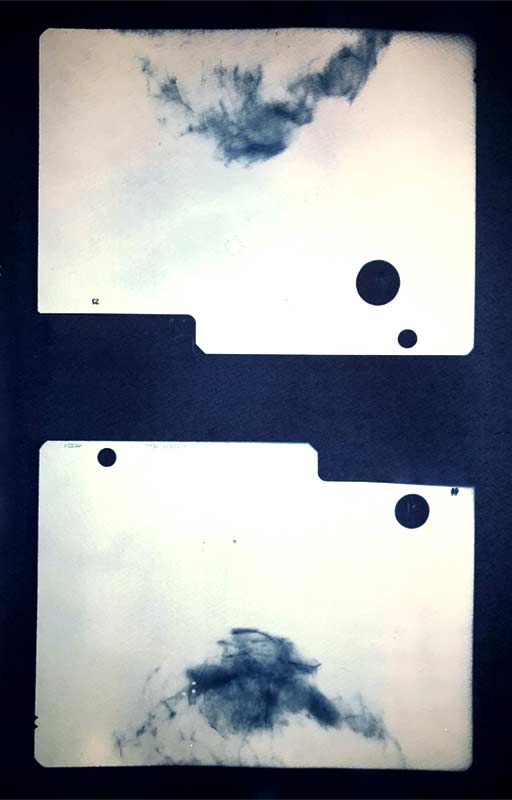
Although I am a photographer, I rarely make documentary works. I work mainly with existing photographic materials, which become the working tools in my experimental laboratory in which images are constructed and deconstructed.
I frequently make use of X-rays, road maps, and photographs from books and printed periodicals. I consider them puzzles or codes I seek to decipher. Paradoxically, the decoding process mostly creates a new secret.
Over the past few years, scanning has become my major work mode. While the camera is the natural extension of the eye and body of the subject who gazes, the scanner maintains an objective distance, without a stance or hierarchy, remaining simultaneously unemotional and sensuous.
Throughout my years of making art, I make frequent use of archaic manual processes, which have become almost irrelevant.
Art enables me to engage in unnecessary actions with their technical clumsiness as I long for materiality in a world in which it is absent. I use a simple office stapler and hundreds of staples to create precise and orderly circles in my new series. The prosaic, characterless material encounters an abstract, ritual, impractical action. In many senses, the work distills my action mechanisms: identifying existing material whose functionality originates in the non-art world; appropriating, abstracting, and transforming it. The material loses its original function as it creates a singular, unique, and poetic new world.
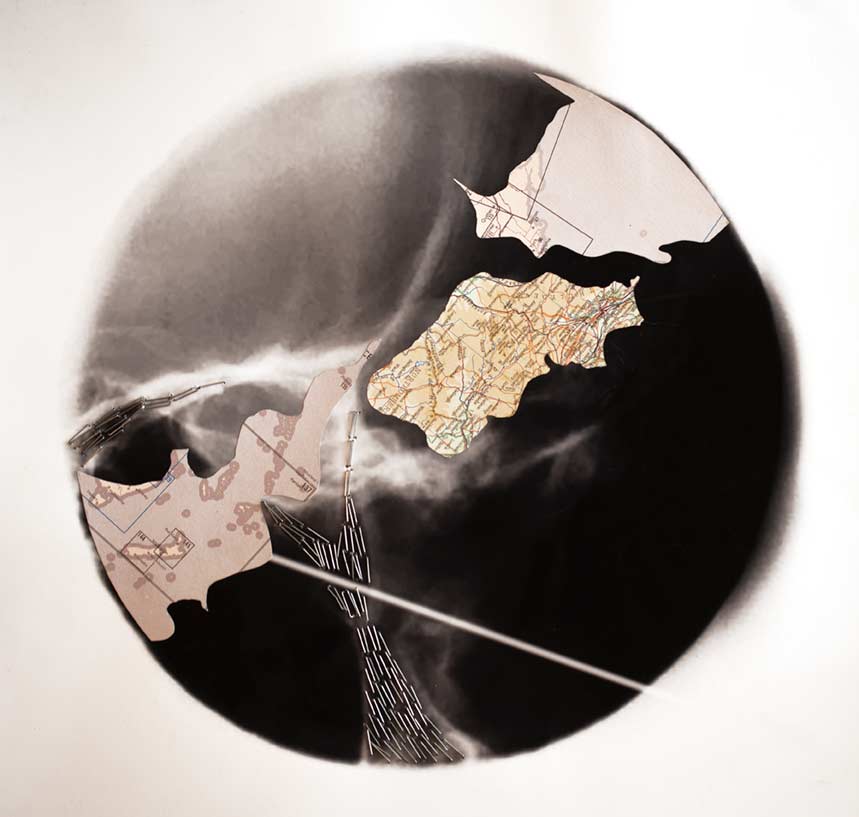
A feeling of discovery ensues when the two coalesce into an image. Inert and organic materials originating in my own and foreign bodies are the elements with which I work. Similar to a chemical reaction, they undergo a transformation to come together into a lyrical image that sometimes loses its source entirely, a process of abstraction.” – Adi Oz-Ari
ADI OZ-ARI
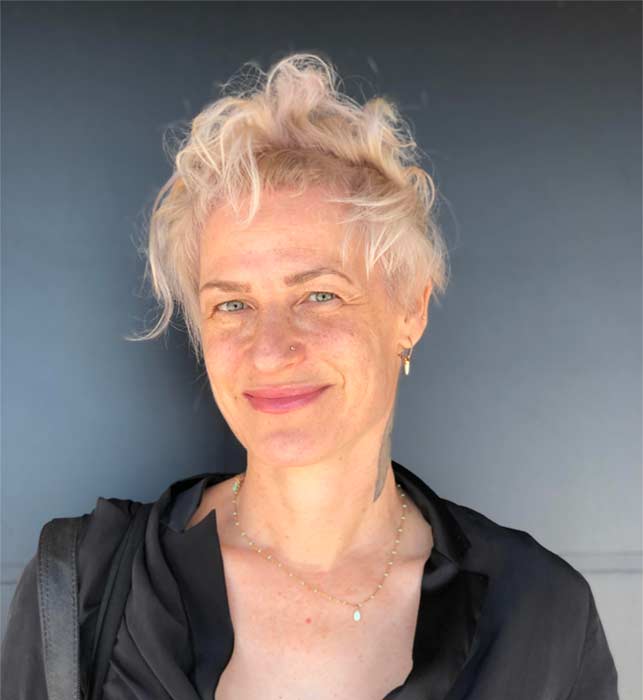
Adi Oz-Ari was born in 1968. Lives and works in Tel Aviv. A graduate of the Physical Therapy Department (B.P.T.), Tel Aviv University (1992); the Interior Design program (B.Des (interior)), the College of Management, Givatayim, Israel (2003); and the art department, Hamidrasha School of Art, Beit Berl Academic College (2012). Holds an M.F.A. from the Bezalel Academy of Arts and Design, Jerusalem and Tel Aviv (2015).
A multidisciplinary artist who engages mainly with manipulated photography, photographic installations, and the effects of medium transitions on the image, her photographs are produced using scans, digital processing, photographic readymades, X-rays, cyanotype, etc.
In Oz-Ari’s work, photography is a material in itself, treated as an independent object in the world rather than a vehicle with which to document reality.
Her practice involves work with different photographic techniques and materials, examining the artist’s impact on these substances as if she were an alchemist. In addition to material research, she explores manifestations of one’s mental and physical relation to such notions as pain, desistence, and loss.
The images in her work are never direct; they go through a set of adaptations, transformations, and manipulations to articulate the contents addressed in each body of work in the most profound manner.
Oz-Ari’s work has been featured in various group exhibitions in Israel and abroad, as well as in one- and two-person exhibitions, among them at the Photo Lab Gallery, Tel Aviv; the Tel Aviv Artists’ House; The Lobby Art Space, Tel Aviv; and Indie Photography Group Gallery, Tel Aviv, where she was a member of the artist cooperative from 2012 to 2014. Internationally, she participated in several exhibitions, including a collateral show at the 57th Venice Biennale (“Empire II,” curator: Vanya Balogh).
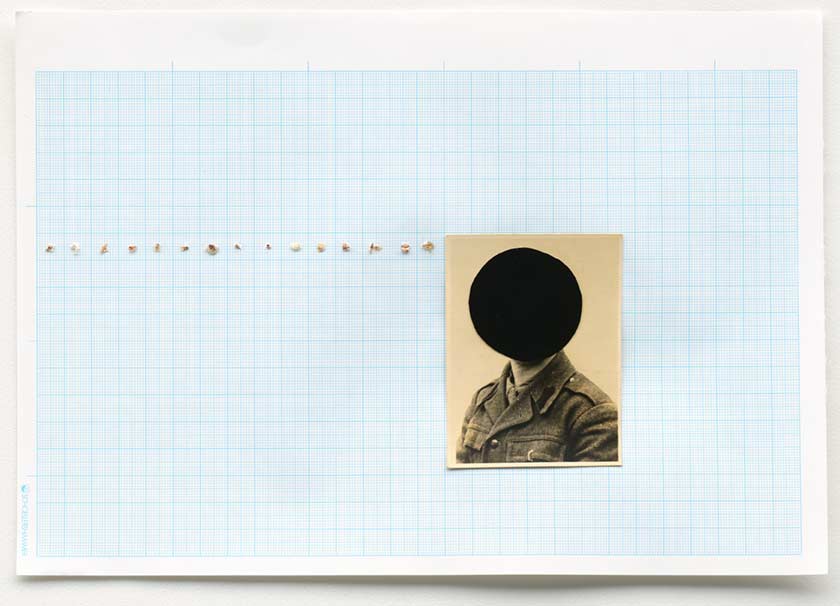
I have been conducting a dialogue for many years with illness and recovery.
Throughout the years of engaging in the theme, at times, the issue was close to me, and at other times it was not so close. However, due to the Corona pandemic, the illness theme has “taken over” my artwork.
Given the situation, I used my home as the studio during the first lockdown and created a series of intimate works integrating various types of papers. These included drawing paper, printed X-rays, prints of catheterizations, drawing paper with millimeter squares, rolls of EKG printouts, and more.
The artworks sometimes involved my body directly, such as in the small works on paper along with my blackened portrait with a line of scanned scabs from my wounds.
Sometimes, as if deliberately, the works spoke about dispersal (spread of disease? the body?) in the global sense, such as the piece I made integrating a geographic map superimposed on an X-ray printout.
My interest in the series was to depict dispersal in its physical, emotional, metaphorical, and other senses. The connection between the different types of papers in my journal is based on a philosophical connection together with formalistic connections that have been my artistic concern.

